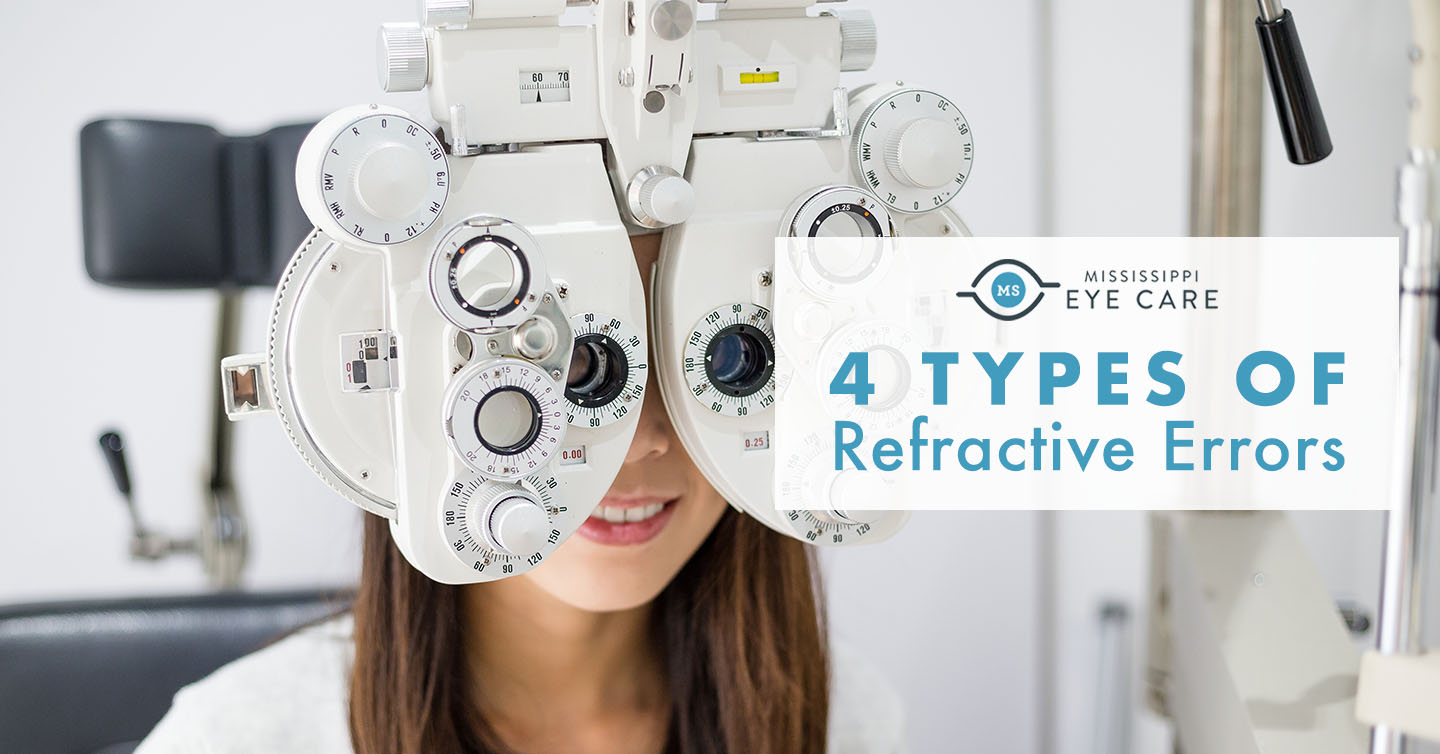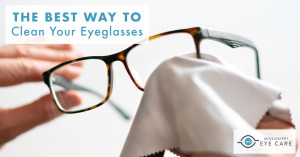Are you experiencing blurred vision? Are you finding yourself squinting more often? The fact is, you could have one of the four types of refractive errors that are some of the most common eye problems, and you don’t even know it.
What is a refractive error?
Before we take a closer look at the four types of refractive errors, we should first glance at what a refractive error is. To clarify, a refractive error makes it harder to see clearly. More specifically, refractive errors occur when your eye’s shape prevents light from properly focusing on your retina.
What’s more, according to the National Eye Institute, refractive errors are one of the most common vision problems, affecting more than 150 million Americans. Now that we know what a refractive error is, let’s review the different types.
Nearsightedness
Also known as myopia, nearsightedness occurs when far-away objects look blurry. In short, you can see things that are near you, but have trouble focusing on things in the distance. Nearsightedness is caused by the shape of the cornea and lens, or when the eyeball grows longer than average, front to back.
The longer shape of the eye makes light focus in front of the retina instead of on it. Generally, symptoms appear between the ages of 6 and 14.
Farsightedness
On the other hand, farsightedness, or hyperopia, means objects up close are blurry. In this case, the eyeball grows too short from front to back or the shape of the cornea or lens is different.
With farsightedness, the light focuses behind the retina instead of on it. Typically, those with farsightedness are born with it.
Astigmatism
When it comes to astigmatism, objects both near and far can appear distorted and blurry. And, once again, it has to do with the shape of the eye.
Because the shape of the cornea or lens is abnormal, light bends differently as it enters the eye. What’s more, people with astigmatism usually have another refractive error, such as farsightedness or nearsightedness.
Presbyopia
This refractive error has more to do with the aging of the lens. In a nutshell, presbyopia usually affects middle-aged and older adults, making it harder for them to see objects up close. With presbyopia the lens becomes less flexible and harder. In turn, light stops focusing properly on the retina.
Summary
Now that you know more about the four types of refractive errors, you should know that refractive errors can be corrected with prescription glasses or contact lenses. Schedule your next comprehensive eye exam at your local Mississippi Eye Care clinic, focusing on better vision this fall. For more vision health news and eye care tips, keep reading our blogs.




